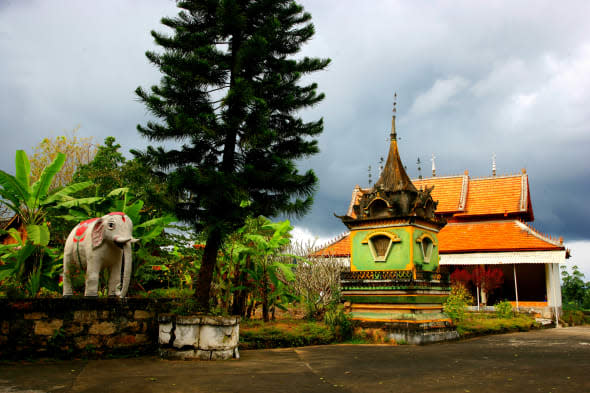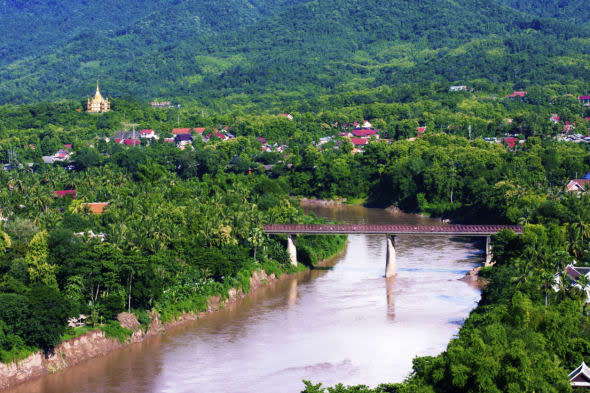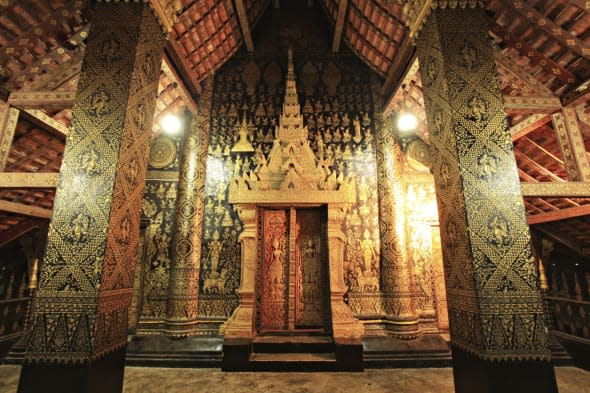Laos: Why you should visit in 2015

A journey through Laos takes you to the heart of traditional south-east Asian culture. Less developed than China to the north and Thailand to the west, landlocked Laos provides a glimpse of pre-modern Asia to travellers in search of something less touristy and more laid-back than its more visited neighbours.
To give you some idea of how 'untouched' this country is, there are still Laotian villages that have only just received electricity. With 149 ethnic groups in a country of just 2.8 million people, you'll regularly hear stories about other tribes and their 'strange' ways - even when they are just over the next hill.
In the countryside, the hallmarks of urban life are almost nonexistent. Instead of local government, temples remain central to social order, the natural environment provides a large proportion of food and clothing (without the need for middlemen) and the Mekong River and her tributaries are the main 'roads' allowing movement around the country.
Because it is still relatively off the tourists' beaten track, travelling through Laos requires planning and a little nerve. But while its hotchpotch of unsealed roads, rudimentary boat services and local minivans may seem, on paper, more suitable for backpacking gap year students, than mature travellers, there are now a growing number of hotel chains and resorts that have made it possible to enjoy this authenticity in comfort.
You can now chart a route from northern Laos to its centre, which takes in the country's most beautiful elements, with relative ease.
Where to start
A great place to begin your trip through Laos is Xishuangbanna, Yunnan Province, China (pictured below) as the local airport is well-served by international flights. This area of southern China is rapidly growing in popularity due to its blue pollution-free skies, beautiful tropical fauna, and local ethnic food.
You'll find high-end hotels, such as the Xishuangbanna Hotel and Spa just across the border from Laos, where staff can assist your onward travels. While the accommodation is very good, this lovely hotel is also worth it just for the food: local chefs recreate the fantastic cuisine in-house.

From here you'll need to find transport to take you from China to Laos. There are a number of companies which offer this: try Green Discovery Laos, which offers the service for 676 US dollars for two people (and you can pay on credit card).
As you journey into Laos proper, the countryside begins to dominate. Vegetation stretches out as far as the eye can see, entirely uninterrupted by industry.
Major transport hub towns, such as Oudom Xai, are often nothing more than elongated high streets. Travel a little further into the wilderness, and you'll find yourself in an harmonious rural idyll.

While much of the accommodation is fairly basic, there are a growing number of upcoming luxury hotels. Take Secret Retreat's Muang La Resort (pictured above), east of Oudom Xai town. Conceived by a French hotelier who married a native Laotian woman, it took 25 sit-down meetings to negotiate the land lease with the local owner.
The result was worth it. This is a collection of tasteful, spacious guest villas in the Naam Phaak Valley, and many of them overlook the rushing Nam Ou river. Even better, there are two natural hot spring pools to ease out those knots after a bumpy journey to the town of Muang La.
There is plenty to explore when you stop here. The town of Oudom Xai is famous for its Buddha in the Pha Chiao Sing Kham temple, which, according to local legend, was found in the river in the 14th century. The two nearest villages fought over the stature, until finally they placed him in a bamboo raft to see which direction he floated in. Local people have taken great pains to protect the Buddha ever since, even placing him in a cave during the Vietnam War.
The town itself is a living marketplace, with roadside greenery offering up coriander, lemongrass, galangal, sugarcane, lemons, jackfruit, and pineapples (although sadly, there's a notable lack of birdsong overhead - they're too good a source of protein).
As you walk through the village, you'll watch women grating papaya for lunch, enjoy the smell of smoking meat, and watch a few rounds of petanque, all to the sound of faint pop music and the occasional scooter rushing past.

Luang Prabang
A visit to this part of the world would not be complete without a visit to the country's national treasure. The city of Luang Prabang is a UNESCO world heritage site (above) that contains the country's former royal palace, and a collection of vivid temples.
Travelling from Muang La to Luang Prabang is a thrilling, if mildly uncomfortable, journey. You can book a car to take you to the public boat at Nong Khiaw. From there, you'll be asked to sit on a wooden plank for five hours on board a local boat as you watch lush, verdant mountains and golden beaches roll past. At £12 per person for awe-inspiring views, it's definitely worth the bottom-ache. Just pack a cushion.
From there, you'll be pointed towards the local bus, or minivan. And then a 90 bumpy minutes later you'll lurch to your destination, with a few more stories to tell.
It might be overrun with backpackers, but Luang Prabang remains a perfectly preserved, colourful historic wonder. The town is vivid and alive with noise. Blue tuk tuks rattle past holding white tourists clutching rucksacks. Golden temple spires glint on the horizon. And every single commercial entrance welcomes the sight of travellers.
Although the worth of the city's treasures is immeasurable, time-wise you can see everything in about two full days, if you're efficient.

A highlight is the former palace of King Sisavang Vong, built between 1904 and 1909. After the Lao people formed a republic, the palace became a museum - and it's one that sends out clear signals about who's in charge now. Stripped of all personality, few objects remain to indicate the style of everyday living. Instead there are photos of visiting dignitaries, including one of Ho Chi Minh dancing his socks off in 1963. Large portraits of the royal family hang by beds that sit in vast empty rooms.
Accommodation is abundant here, but for those in search of their creature comforts, head for Satri House in Luang Prabang, built at the turn of the last century as the residence of Prince Soupha-Nouvon.
Exquisitely restored and enlarged a decade ago, visitors can stay in the prince's original suite overlooking his gardens and pool. The original house is filled with sepia photos, dark-wood furniture and antiques that conjure the rarefied, shuttered existence of the Laotian elite, before civil war tore up the status quo.
A stay here would not be complete without visiting the temples. For true culture buffs, these treasures will provide more photo opportunities than are feasible during daylight hours.
For more, see our photos of the highlights of Laos in the slideshow below.
Related articles
Beautiful video: Exploring Laos
Rare Siam crocodile hatches at Laos zoo






